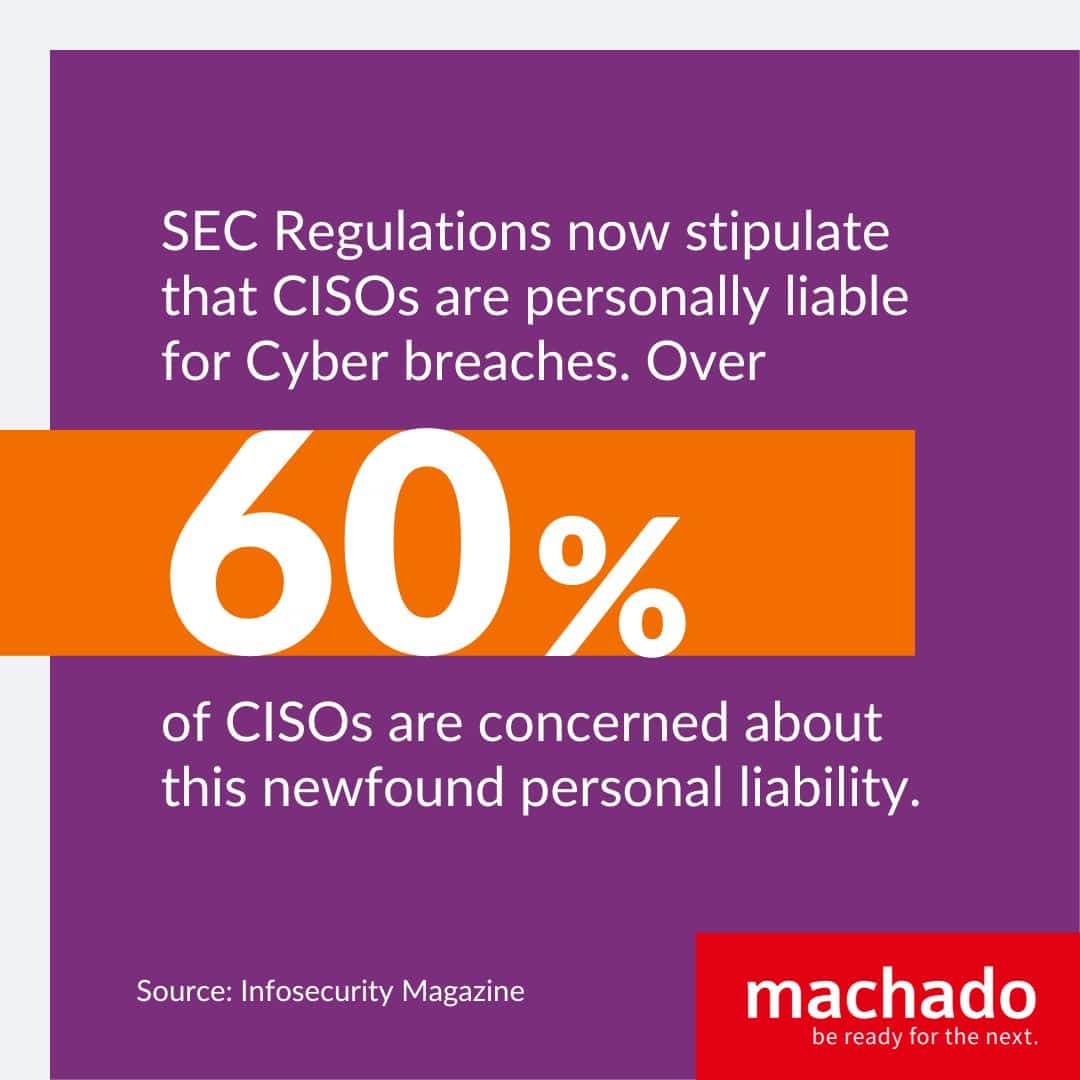TL;DR: A concise guide for business leaders on navigating new SEC rules on cybersecurity, highlighting essential strategies for network performance monitoring and IT infrastructure management to boost security and efficiency in SMBs.
Finding Your Fit: SolarWinds Alternatives for SMBs
Ever have one of those moments where something you’ve relied on suddenly seems less reliable? Like when your smartphone dies while you’re driving somewhere for the first time (and suddenly you wish you still had MapQuest), only for your car to get a flat tire right after?
That’s probably how you felt when you first heard about the SEC’s findings on SolarWinds, and the subsequent new SEC rules on cybersecurity.
Here’s the situation: a tool that’s been a go-to for managing your network is now flagged for security concerns, which have affected 18,000 customers, including various US Federal Departments, such as the Health and State Departments. This isn’t just IT jargon, it’s a real game-changer for everyone from the server room to the boardroom.
Now, the big question on your mind might be, ‘What’s the best move forward?’.
You’re not just looking for another tool, you’re looking for a SolarWinds alternative that’s solid on security and doesn’t drop the ball on performance.
The stakes? High.
We’re talking about safeguarding your data, keeping your operations smooth, and yes, maintaining that hard-earned trust of your clients.
We’re going to go through the options and find something that’s not just a quick fix but a solid step into a more secure digital future.
It’s crucial to understand the root of the shift we’re facing. The SEC’s findings on SolarWinds aren’t just a blip in the tech news cycle. They represent a significant moment in cybersecurity history. Let’s break down what these findings entail and why they’re pivotal for anyone responsible for network management, especially CISO’s, and IT Managers.
Understanding the SEC’s Findings on SolarWinds
When the SEC released its findings on SolarWinds, it was a significant moment for everyone relying on network management tools.
Issues arose when SolarWinds’ public statements about its cybersecurity practices didn’t align with its actual internal practices. This discrepancy isn’t just a minor error, it’s a major concern in an industry where precision and honesty are crucial.
Trust and Reliability in IT
In IT, and particularly in sectors dealing with sensitive data, trust in our tools is everything. SolarWinds actions showed that even widely used tools could have hidden flaws in their security. This revelation is important because it challenges us to reevaluate the tools we depend on, ensuring they are truly secure and reliable.
Regulatory Compliance and The Shift in Accountability
The new SEC rules on cybersecurity marks a shift towards stricter enforcement of cybersecurity disclosures. This is a clear message that accurate reporting and compliance with cybersecurity standards are mandatory. It’s a clear message that your firm needs a SolarWinds alternative.
For IT professionals, this means selecting tools that are not only high-performing but also meet these stricter security and reporting standards.
The Broader Implications for IT Management
The SolarWinds case highlights the importance of making informed decisions about network architecture tools. It’s not just about choosing a tool that meets today’s needs, it’s about considering how these tools will stand up to future security challenges and comply with regulatory requirements. The decisions you make now have long-term implications for the security and efficiency of your IT infrastructure.
With a clearer picture of the SEC’s findings on SolarWinds and their implications for trust and compliance in IT, it’s essential to pivot our focus to the next critical piece of this puzzle: the SEC’s new cybersecurity rules.
These rules aren’t just regulatory updates, they’re game-changers in how cybersecurity risks and incidents must be reported and managed. Learn what these new rules entail and how they reshape cybersecurity compliance for IT professionals.
Analysis of the SEC’s New Cybersecurity Disclosure Rules
The new SEC rules on cybersecurity mandate a detailed disclosure of significant cybersecurity incidents. This requirement means that any incident that materially affects a company’s operations, financial condition, or reputation must be reported promptly.
Impact on Different Types of Companies
New SEC rules on cybersecurity disclosure rules are reshaping cybersecurity. These rules, and their emphasis on transparency and accountability, are not one-size-fits-all.
They impact companies differently based on their stage in the business lifecycle and market presence. Let’s examine how these regulations affect three key categories of companies: Publicly Traded Companies, Pre-IPO Companies, and Foreign Private Issuers.
- Publicly Traded Companies: They are now under increased scrutiny to promptly disclose significant cybersecurity incidents. This transparency is vital for investors and stakeholders who rely on the security and integrity of these companies.
- Pre-IPO Companies: For companies preparing to go public, these rules introduce a new layer of compliance. Demonstrating cybersecurity measures and transparent reporting can be pivotal in gaining investor confidence.
- Foreign Private Issuers: These companies, although not based in the U.S., must comply with these rules for their U.S. market activities. This global reach of the regulations signifies the widespread importance of cybersecurity in international business practices.
Implications for Professional Service Firms
For professional service firms, these rules demonstrate the importance of not just having strong proactive IT solutions but also being able to demonstrate and report on them effectively.
Firms must be equipped to detect, respond to, and disclose cybersecurity incidents, understanding that how they handle these issues can significantly impact client trust and business reputation.
This is especially important for SMBs, who might need to scale up their cybersecurity infrastructure and reporting practices to meet these new standards.
As we’ve seen, the new SEC rules on cybersecurity have far-reaching implications across various business types, reshaping expectations and requirements in corporate digital security. While the new SEC rules directly impact publicly traded companies, there’s a notable trickle-down effect that influences smaller businesses and private firms.
Regulations set for larger corporations often set a precedent that gradually trickles down to smaller businesses, setting new industry standards and expectations. In fact, federal regulations cost small businesses 40 billion USD every year. This means that SMBs, despite not being the primary target of these regulations, should be proactive in adapting to these changes.
Even if a small legal firm is not publicly traded, the heightened standards around cybersecurity reporting and infrastructure can become the new norm in the legal industry. Clients, becoming more aware of these standards, begin to expect the same level of cybersecurity vigilance and transparency from all their service providers, regardless of size.
Therefore, it becomes crucial for SMBs to stay ahead of these trends, ensuring they not only comply with current regulations but are also prepared for future industry shifts. This foresight is essential for maintaining competitive advantage and client trust in an increasingly security-conscious business environment.
But what does this mean for those in charge of IT departments?
Explore the specific implications of these regulatory changes for IT Managers, focusing on how they can adapt and ensure your firm understands these new cybersecurity regulations.
SEC’s Cybersecurity Disclosure Rules: A Focus for IT Managers
As an IT Manager, it’s crucial to align your network monitoring processes with these regulatory standards. This includes identifying significant cybersecurity incidents within your network that qualify as material under the SEC’s criteria.
With the new SEC regulations, the role of Chief Information Security Officers (CISOs) has significantly evolved, placing them directly in the line of accountability. SEC Regulations now stipulate that CISOs are personally liable for Cyber breaches. Over 60% of CISOs are concerned about this newfound personal liability.
Now charged with ensuring that their teams are not only adept at identifying and stopping cybersecurity risks but also proficient in documenting and reporting incidents accurately.
This responsibility is heightened by a growing concern among global CISOs about the possibility of personal liability for successful cyberattacks that occur under their supervision. Highlighting the need for CISOs to ensure comprehensive compliance in all aspects of IT infrastructure management, from network monitoring to data protection.
CISOs now include a substantial focus on both technical security measures and compliance/reporting, reflecting the strategic importance of cybersecurity in today’s business environment.
Proactive Network Management and Future-Proofing Strategies
A forward-looking approach is now indispensable in managing network performance and security. Proactive Network Performance Monitoring, such as penetration testing, involves not only real-time threat detection but also anticipating future network challenges. Regularly updating your network monitoring and cybersecurity strategies is vital to stay ahead of potential threats and to ensure that your network infrastructure remains secure, and compliant with evolving regulations.
Staying compliant and secure is more crucial than ever.
This brings us to a vital decision point: choosing the right tools for the job. With SolarWinds now under scrutiny, many IT Managers are on the lookout for reliable alternatives that can not only meet but exceed the standards set by these new regulations. Let’s shift our focus to some of the leading SolarWinds alternatives in the market, evaluating their features, compliance capabilities, and how they can improve your network’s performance and security.
Integrating Proactive Strategies with SEC Regulations
The new SEC rules on cybersecurity mandate prompt and detailed incident reporting, a task where network visibility plays a crucial role. Now with these regulations in place, one option might be Proactive Managed Service Providers. They have expert skills in proactive cybersecurity, tech training, and network monitoring. With an emphasis on network monitoring and IT asset management across all platforms.
Simplified Reporting: A Key to Compliance
The ability to monitor network performance and troubleshoot efficiently is central for compliance with the SEC’s regulations.
This is where the expertise of Managed Service Providers, among others, can be instrumental.
Utilize tools that streamline network documentation and improve performance insights. By doing this businesses can generate precise compliance reports and maintain a detailed audit trail.
Proactive Network Management: Beyond Traditional Measures
In line with the SEC’s focus on proactive cybersecurity measures, features like automated business backups and network traffic analysis are becoming standard practice in network management, not just within MSP offerings but across the board. These tools aid in preemptive security management, ensuring compliance with evolving security protocols.
Broadening the Scope of Cybersecurity Risk Management
Businesses need to focus on improving cybersecurity and refining public disclosures. Allowing you to reach higher standards than the new SEC rules on cybersecurity. Explore various strategies to help your firm rise to this target.
Best Practices for Cybersecurity Risk Management
Explore strategies for effective cybersecurity risk management. These strategies not only shield you from emerging threats, but also empower you to adapt and thrive in the face of evolving digital challenges. Learn about the fundamental practices, providing you with valuable insights to fortify your cybersecurity.
Strategy and Governance:
Effective cybersecurity risk management begins with a well-defined strategy and governance framework. This includes risk assessment and prioritization, where you regularly evaluate cybersecurity risks based on their potential impact and allocate resources. Another crucial aspect is the development of comprehensive security policies and procedures aligned with industry standards and regulatory requirements.
These policies ensure you have clear guidelines to follow, and that all employees are familiar with and adhere to these principles. Additionally, a Cyber Incident Report (CIR) should be in place to address cybersecurity incidents effectively, with regular testing and updates.
A culture of security among employees is vital. This involves conducting regular cybersecurity training and awareness programs, ensuring that everyone understands their role in maintaining security. Implementing strong access controls and multi-factor authentication adds an extra layer of protection. This prevents unauthorized access to sensitive data and systems.
Improving Assessments and Disclosures:
Promote transparency within your firm, where assessment results are openly shared, and communication about security concerns is encouraged.
Regularly testing and auditing cybersecurity defenses through various methods helps identify vulnerabilities and weaknesses. To maintain transparency, public disclosures must communicate significant cybersecurity incidents and align with regulatory requirements.
By implementing these practices you can strengthen your cybersecurity efforts and effectively manage risks clearly and comprehensively.
Surviving SolarWinds And Network Management Resilience
The SEC’s findings on SolarWinds and new disclosure rules have reshaped how we approach digital security. Trust and transparency are vital.
Tools must perform securely, and compliance is non-negotiable for businesses of all sizes. If you’re ready to strengthen cybersecurity practices and assess their risk management strategy, we invite you to access our Cybersecurity Risk Assessment form to secure your company’s future.
Professional Service Firms, including SMBs, must take a proactive stance, scaling up infrastructure and reporting to meet SEC standards. IT Managers are at the forefront, ensuring compliance and balancing costs. Proactive network management is key to staying ahead of threats.
Utilizing advanced network management tools for visibility and proactive control can be complex.
To ensure compliance with the new SEC rules on cybersecurity utilizing the expertise of a Proactive Managed Service Provider can be invaluable. So this partnership not only simplifies compliance but also offers a reliable alternative for sophisticated network management. By leveraging their cybersecurity expertise, your firm can confidently meet regulatory standards while focusing on core business functions.
Download our guide to learn how you can get more done with your current IT staff.Be Ready for the Next IT Opportunity







